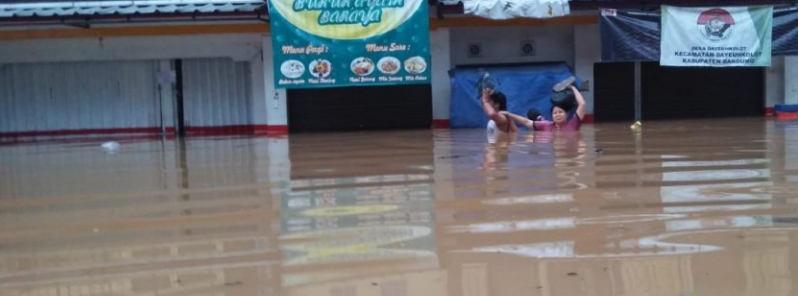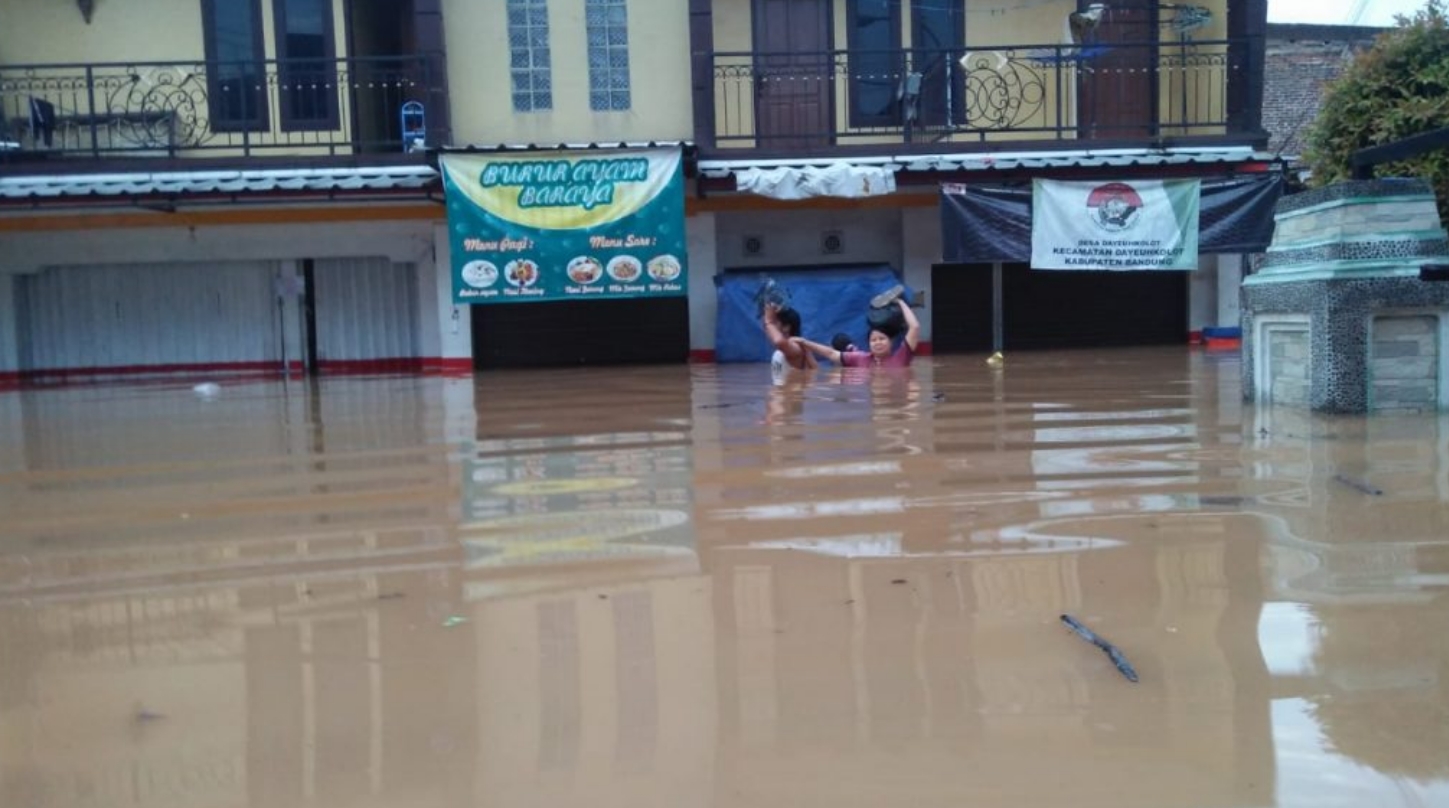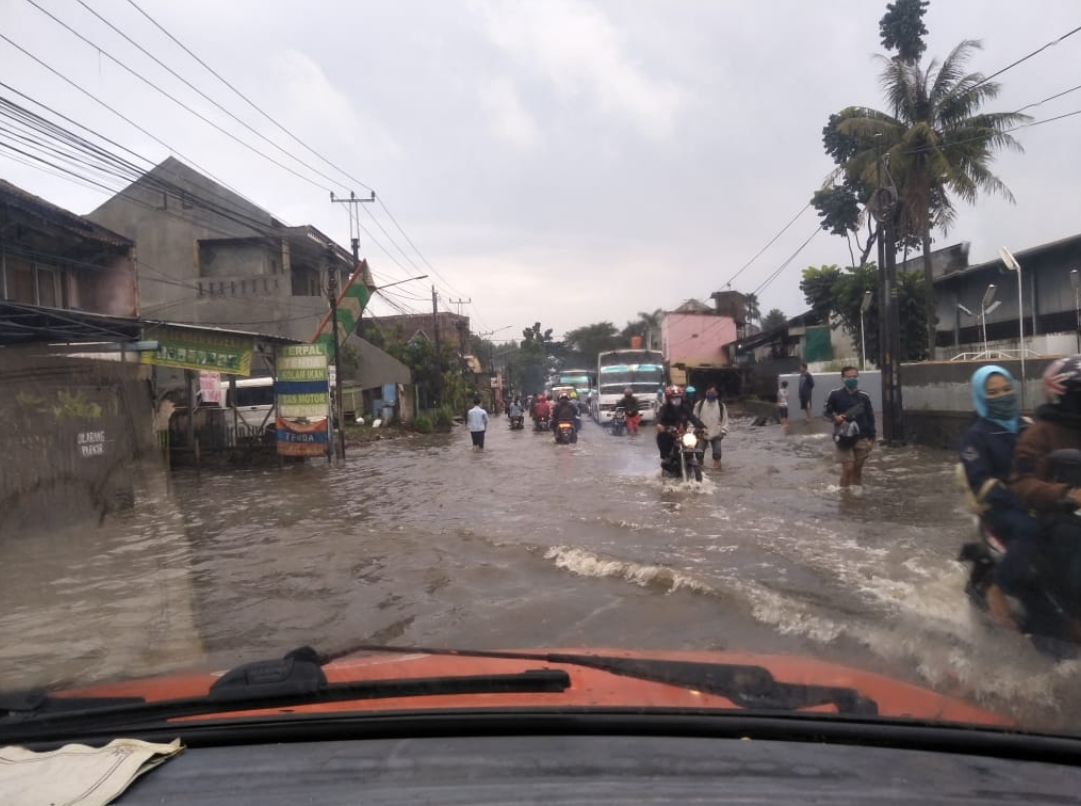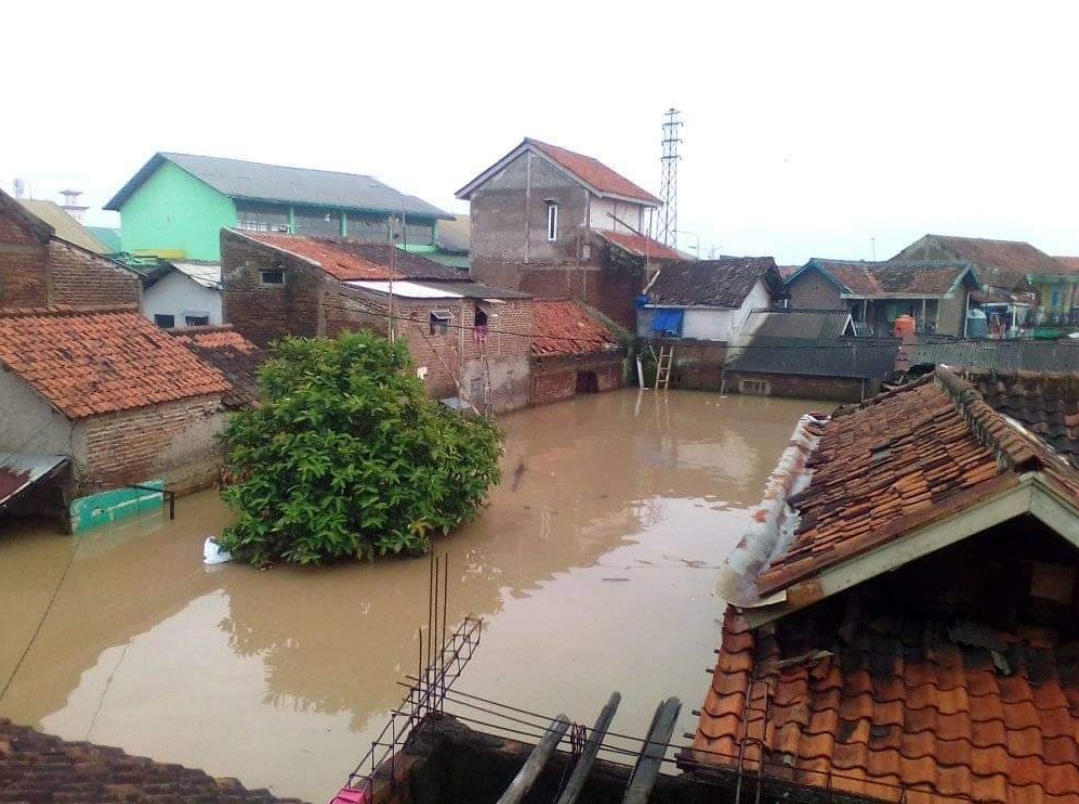Major floods submerge 22 000 homes in West Java, Indonesia

Major flooding affecting West Java, Indonesia since April 30, 2020, submerged 21 888 houses — affecting up to 81 088 residents — in five sub-districts of Bandung District, according to the West Java Disaster Mitigation (BPBD).
The flood-hit areas are Dayeuhkolot, Baleendah, Arjasari, Bojongsoang, and Banjaran, said BPBD head Budi Budiman. In addition, 46 schools were inundated, as well as 96 places of worship and 27 public facilities.
In Bojongsoang, Bojongsari, and Tegaluar villages of the Bojongsoang sub-district, floodwaters reached up to 1.4 m (4.6 feet), affecting 6 814 homes, 53 places of worship, 19 schools, and 20 public facilities. A total of 6 971 people have been affected, including 629 families. 1 710 individuals have been displaced.
In the villages of Andir and Baleendah, the water level reached 2.2 m (7.2 feet), engulfing 7 907 houses, 35 churches, and seven schools. A total of 9 208 households– including 33 252 individuals– have been affected. 21 families comprised of 91 people have been forced to evacuate to higher areas.
In the sub-district of Dayeuhkolot, the villages of Dayeuhkolot, Citereup, and Pasawahan were hit, impacting 8 719 families that include 26 078 people. 96 people from 33 families have been displaced. A total of 7 907 houses were inundated by floods up to 2 m (6.6 feet), as well as eight places of worship, 20 schools, and seven public facilities.

Image credit: BPBD

Image credit: BPBD

Image credit: BPBD
Severe weather has been pounding West Java since the beginning of this year. In late January, up to 14 000 houses were damaged or destroyed, affecting approximately 60 000 people.
Widespread flooding and landslides hit the area again late February, forcing 10 000 people to evacuate. Thousands of properties were damaged, prompting an emergency declaration for two weeks.
Bandung regency saw severe widespread flooding late March, affecting 56 000 residents and 9 280 buildings.

Featured image credit: BPBD

This is terrible. Excessive cloud forming by chem-trailing to blame. that means humans were involved in creating this disaster, and not these people. I have today s nasa image of the rain formation clouds.